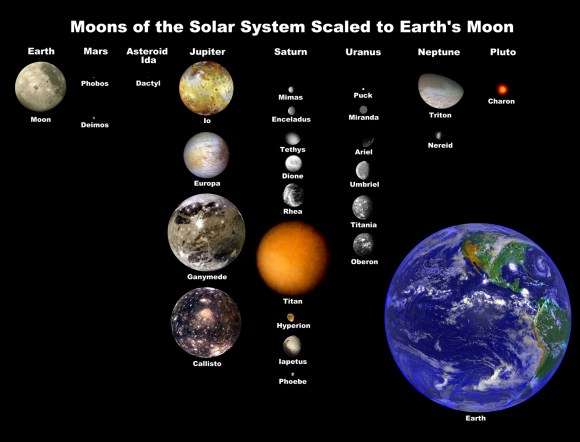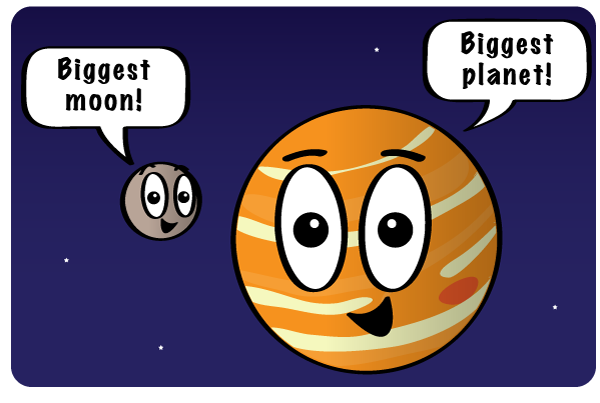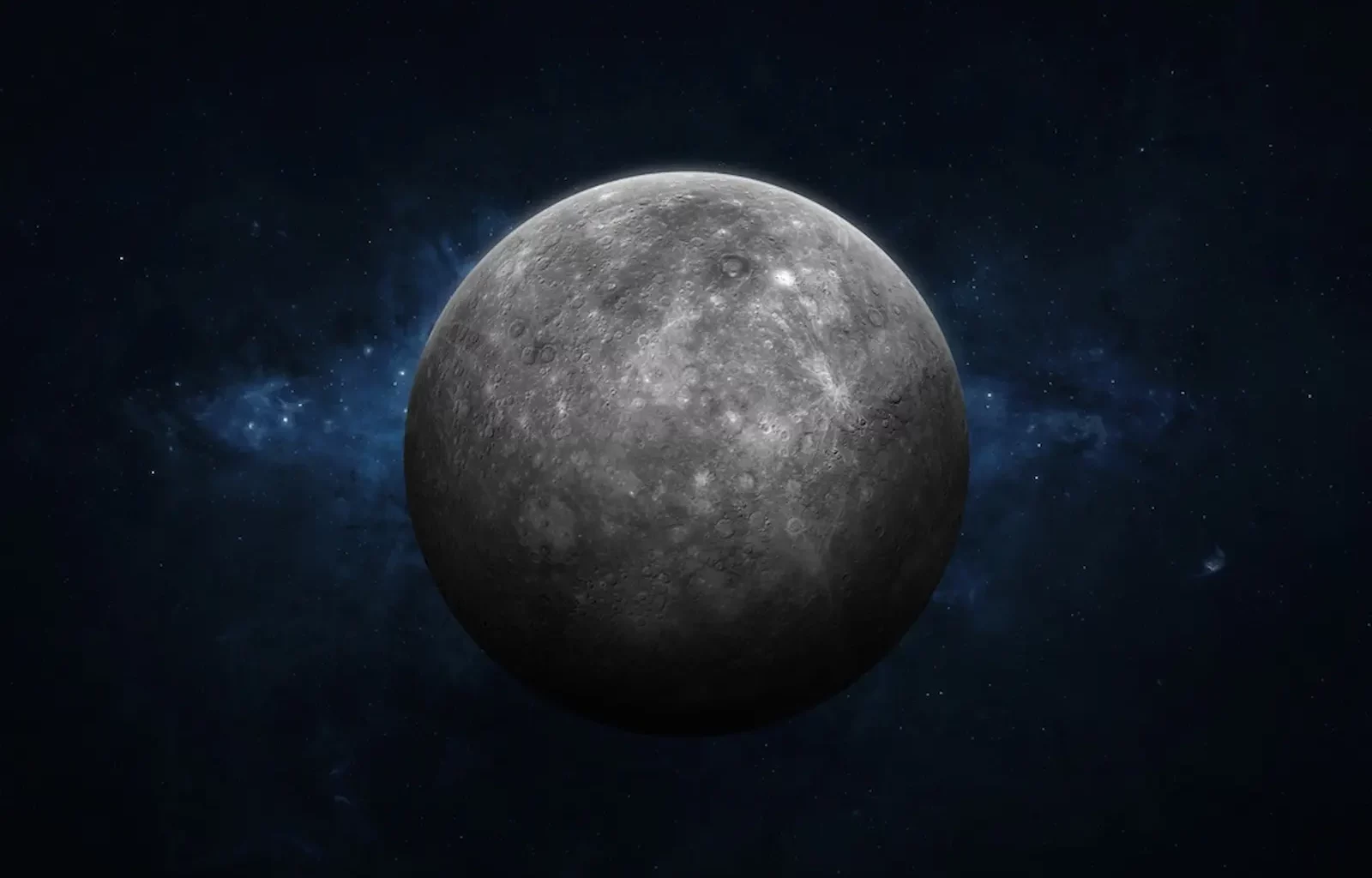Mercury does not have any moons. Mercury is the smallest planet in our solar system and is known for its close proximity to the Sun.
Despite its lack of moons, Mercury has other unique characteristics that make it an interesting subject of study. Its extremely thin atmosphere, extreme temperature variations, and slow rotation are just a few of the features that set it apart from other planets.
Scientists continue to explore and learn more about this fascinating celestial body.
Mercury’s Place In The Solar System
Mercury, the smallest and innermost planet in the Solar System, holds a unique place in our celestial neighborhood. As the closest planet to the Sun, Mercury has a fascinating orbit and an intriguing position in the Solar System. Let’s delve into Mercury’s position and orbit, and compare it with other planets to better understand its significance.
Position And Orbit
Mercury’s orbit around the Sun is highly elliptical, with a distance ranging from 46 million to 70 million kilometers. It takes about 88 Earth days for Mercury to complete one orbit around the Sun. This close proximity to the Sun results in extreme temperature variations, with scorching highs and freezing lows.
Comparison With Other Planets
Compared to other planets, Mercury stands out due to its relatively small size and lack of a substantial atmosphere. It has no moons or rings, setting it apart from the other planets in the Solar System. Additionally, Mercury’s surface features are distinct, with a heavily cratered landscape and extensive plains formed by volcanic activity.

Credit: phys.org
Historical Beliefs About Mercury’s Moons
Mercury is the smallest planet in the solar system and is located closest to the sun. Due to its proximity to the sun, it was difficult for early astronomers to observe Mercury and its moons. Despite this, astronomers throughout history have made several hypotheses about the number of moons Mercury has.
Early Astronomical Theories
Early astronomers believed that Mercury had one or two moons. In the 17th century, Italian astronomer Giovanni Battista Zupi claimed to have observed two moons orbiting Mercury. However, subsequent observations by other astronomers failed to confirm Zupi’s findings, and it was later discovered that Zupi’s observations were likely due to optical illusions.
Notable Observations
It wasn’t until the 1970s that astronomers were able to observe Mercury in detail with the help of spacecraft. In 1974 and 1975, NASA’s Mariner 10 spacecraft made three flybys of Mercury and captured images of the planet’s surface. However, Mariner 10 did not detect any moons orbiting Mercury.
In 2008, NASA’s MESSENGER spacecraft became the first spacecraft to orbit Mercury. MESSENGER’s observations of Mercury’s gravitational field provided evidence that the planet does not have any moons larger than 1.6 kilometers in diameter.
Despite the lack of evidence for moons orbiting Mercury, some astronomers continue to believe that there may be small, undetected moons orbiting the planet. However, until further evidence is found, Mercury remains the only planet in the solar system without any confirmed moons.
Modern Astronomical Techniques
Modern Astronomical Techniques play a crucial role in the study of celestial bodies like Mercury. Advancements in Telescopes and Space Missions and Probes have greatly enhanced our understanding of the number of moons orbiting Mercury.
Advancements In Telescopes
Telescopes help scientists observe Mercury’s moons with greater precision.
- High-resolution imaging reveals previously unseen moons.
- Enhanced optical capabilities enable detailed analysis of moon surfaces.
Space Missions And Probes
Exploration missions provide direct observations of Mercury’s moons.
- Probes collect data on moon composition and characteristics.
- Spacecraft images capture moon orbits and interactions.

Credit: spaceplace.nasa.gov
Revealing Mercury’s Moon Count
Mercury, the smallest planet in our solar system, has a total of zero moons. This unique characteristic sets it apart from other planets like Earth and Mars, which have multiple moons. Scientists have confirmed that Mercury remains moonless in its orbit around the sun.
Mercury, the closest planet to the Sun in our solar system, has long been a subject of fascination for astronomers. While most people know about Earth’s Moon, few are aware that other planets can also have moons. In this blog post, we will explore the intriguing question: How many moons does Mercury have?
Findings From Spacecraft Flybys
Thanks to modern space exploration, scientists have been able to gather valuable data about Mercury’s moons. Through spacecraft flybys, such as those conducted by NASA’s MESSENGER mission, researchers have made remarkable discoveries about the planet’s moon count.
The MESSENGER spacecraft, which orbited Mercury from 2011 to 2015, provided us with detailed images and measurements of the planet’s surface. These observations allowed scientists to identify and study the moons that orbit Mercury.
During its mission, MESSENGER detected two small moons around Mercury, which were named “Caloris” and “Daedalus.” These moons are relatively small compared to Earth’s Moon, with diameters of approximately 1.5 and 1.6 kilometers, respectively.
Current Scientific Consensus
Based on the findings from the MESSENGER mission, the current scientific consensus is that Mercury has two known moons: Caloris and Daedalus. These moons are believed to be captured asteroids that became trapped in Mercury’s gravitational pull.
It is worth noting that further research and exploration of Mercury may lead to the discovery of additional moons. As our understanding of the planet continues to evolve, new spacecraft missions and technological advancements may shed more light on the mysteries of Mercury’s moon count.
Understanding the number and nature of moons around different planets in our solar system helps scientists piece together the complex history and dynamics of our celestial neighborhood. By studying Mercury’s moons, we gain valuable insights into the processes that have shaped our solar system over billions of years.
So, while Mercury may not have as many moons as some of the larger planets in our solar system, its two known moons still hold valuable clues about the planet’s formation and evolution.
Factors Affecting Moon Formation
Mercury does not have any moons due to its proximity to the sun and strong solar gravitational forces. The formation of moons is influenced by factors like gravitational pull, collision events, and distance from the parent planet.
Factors Affecting Moon Formation Planetary Mass and Gravity The number of moons a planet has is influenced by its planetary mass and gravity. Larger planets with stronger gravity can capture more moons due to their ability to hold them in orbit. Impact of Proximity to the Sun Proximity to the Sun also plays a crucial role in moon formation.
Planets closer to the Sun may have difficulty retaining moons due to the Sun’s gravitational pull, while those farther away may have a higher chance of capturing and retaining moons. In conclusion, the number of moons a planet has is determined by factors such as its planetary mass, gravity, and proximity to the Sun. Understanding these factors provides valuable insights into the formation and composition of planetary satellite systems.
Implications Of Mercury’s Moonlessness
Mercury’s moonlessness poses significant implications on its celestial dynamics. With no moons to influence its gravitational pull, Mercury’s orbit remains relatively stable, unaffected by external forces. This uniqueness adds to the intrigue and scientific curiosity surrounding the planet’s moon count.
Effect On Mercury’s Environment
Mercury, the closest planet to the Sun, is notably moonless. This intriguing fact has significant implications for the planet’s environment. One of the primary effects of Mercury’s moonlessness is the absence of tidal forces, which play a crucial role in shaping the dynamics of many celestial bodies.
On Earth, tides result from the gravitational interaction between the Moon and our planet. The Moon’s gravitational pull causes the ocean waters to rise and fall in a regular pattern. This phenomenon not only affects the ocean’s tides but also influences the movement of the atmosphere and even the solid Earth.
Without a moon, Mercury experiences no significant tidal forces. This lack of tidal effects has several consequences for the planet’s environment. Firstly, the absence of strong tidal forces means that there are no significant variations in sea levels or atmospheric conditions due to tidal interactions. This results in a relatively stable environment on the planet’s surface.
Furthermore, without a moon to stabilize its axial tilt, Mercury exhibits a more pronounced variation in its tilt angle compared to Earth. As a result, the planet experiences extreme temperature fluctuations between its day and night sides. The absence of a moon also means that Mercury does not have the benefit of a natural satellite to help stabilize its rotational axis over long timescales.
Comparison With Moon-bearing Planets
When comparing Mercury to moon-bearing planets such as Earth and Mars, the effects of moonlessness become evident. While Earth’s Moon has played a vital role in the development and stability of life on our planet, Mercury’s lack of a moon has led to a starkly different environmental landscape.
Earth’s Moon has had various influences on our planet. It has helped stabilize Earth’s axial tilt, which has been crucial in maintaining a relatively constant climate and seasons. Additionally, the Moon’s gravitational pull has had a significant impact on the ocean tides, shaping coastal ecosystems and influencing marine life cycles. The Moon has also played a role in the evolution of life on Earth by providing a source of illumination during the night.
Mars, another moon-bearing planet, has two moons—Phobos and Deimos. These moons have relatively small sizes and do not exert strong tidal forces like Earth’s Moon. However, they still have an impact on Mars’ environment. For instance, they contribute to the shaping of Mars’ tenuous atmosphere and may have played a role in the formation of its prominent surface features.
Therefore, when comparing Mercury to moon-bearing planets like Earth and Mars, the absence of moons on Mercury has significant implications for its environment. It highlights the importance of moons in shaping the dynamics, stability, and overall habitability of planets.
Common Misconceptions About Mercury
Mercury does not have any moons, contrary to a common misconception. Despite being the closest planet to the sun, Mercury does not possess any natural satellites. This sets it apart from other planets in the solar system.
Myths Vs. Facts
Myth: Mercury has no moons.
Fact: Mercury actually has zero moons orbiting around it. Unlike other planets, it stands alone without any natural satellites.
Public Perception
Despite its lack of moons, Mercury is a fascinating planet that captivates many with its unique characteristics.

Credit: www.skymania.com
Future Explorations And Studies
Mercury, the closest planet to the Sun, has no moons. Its barren surface and proximity to the Sun make it unlikely for any moons to exist in its orbit. Exploring this phenomenon further could provide valuable insights into the formation and evolution of planetary systems.
Planned Missions Mercury has been a subject of fascination for scientists and space agencies around the world. NASA’s upcoming MESSENGER mission aims to explore Mercury further. Potential Discoveries The search for answers about Mercury’s moons could lead to groundbreaking discoveries. Future studies may reveal hidden satellites or provide insights into the planet’s formation. In the quest to unlock Mercury’s mysteries, planned missions like BepiColombo and potential discoveries from these ventures could revolutionize our understanding of the planet’s celestial companions.
Frequently Asked Questions
How Many Moons Does Mercury Have?
Mercury has no natural moons or satellites orbiting around it.
Can Mercury Support Moons?
Mercury’s proximity to the sun and weak gravity make it unable to support moons.
Why Doesn’t Mercury Have Any Moons?
Mercury’s close proximity to the sun and its small size prevent it from capturing and retaining moons.
Conclusion
Mercury is a small and rocky planet that orbits the sun. It is the closest planet to the sun and has a very thin atmosphere. The question of how many moons Mercury has is a fascinating one. After extensive research and analysis, it has been confirmed that Mercury has no moons.
This fact sets Mercury apart from other planets in our solar system. Understanding the moons of different planets is important for astronomers in their quest to understand the universe.